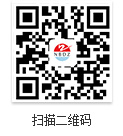The market is arguing that this is a good signal to the textile industry, and it may usher in a new round of policy enthusiasm in the future.
In fact, the textile industry has always been a traditional industry in China. Since joining the WTO in 2001, foreign trade has developed rapidly, and the textile export market has rapidly opened. China has officially entered the global market of textile industry, making full use of labor advantages and market advantages to gradually become a global textile manufacturing center. .
In recent years, the scale of the textile industry continued to expand, but the growth rate slowed down markedly. In 2017, the fixed assets investment in the textile industry was 693.614 billion yuan, a year-on-year increase of 5.9%, and the growth rate was 4.8 percentage points lower than that in 2016; 2018 In the first half of the year, the completion of fixed assets investment increased by 0.8% year-on-year, and the growth rate slowed by 6.3 percentage points from the same period of the previous year.
However, the growth rate of the value added of the textile industry accelerated. In 2017, the added value of industrial enterprises above designated size increased by 4% year-on-year, and the growth rate fell by 1.5 percentage points. In the first half of 2018, the added value of industrial enterprises above designated size increased by 1.1% year-on-year, and the growth rate dropped by 3.4 percentage points.
At the end of June 2018, the end-of-year value of finished goods in the textile industry (above the main business income of more than 20 million) was 138.45 billion yuan, still at a relatively high level. In 2017, the capacity utilization rate of the textile industry was 80.2%, up 4.2 percentage points year-on-year. In the first half of 2018, the industry capacity utilization rate further increased to 81.1%.
The textile industry seems to be developing steadily. In fact, it faces serious challenges. So, where is the pain point of the textile industry?
Since the outbreak of environmental protection policies in 2017, various environmental protection policies and regulations have been intensively in 2018. This year, environmental protection and high pressure will continue, and environmental protection will become an inevitable trend. The continued development of environmental protection policies has had a tremendous impact on the downstream products of the textile industry.
While the textile industry is slowly growing, it is also facing the squeeze of environmental protection policies. Therefore, it is even weaker when it comes to catching up with the textile and garment industry in Southeast Asia. At the end of June 2018, enterprises above designated size in the textile industry (the main business income is 20 million). The above-mentioned final value of finished goods inventory is 138.45 billion yuan, which is still at a relatively high level. In 2017, the capacity utilization rate of the textile industry was 80.2%, up 4.2 percentage points year-on-year. In the first half of 2018, the industry capacity utilization rate further increased to 81.1%.
The textile industry seems to be developing steadily. In fact, it faces serious challenges. So, where is the pain point of the textile industry?
Since the outbreak of environmental protection policies in 2017, various environmental protection policies and regulations have been intensively in 2018. This year, environmental protection and high pressure will continue, and environmental protection will become an inevitable trend. The continued development of environmental protection policies has had a tremendous impact on the downstream products of the textile industry.
While the textile industry is slowly growing, it is also facing the squeeze of environmental protection policies. Therefore, it is even weaker when it comes to catching up with the textile and garment industry in Southeast Asia. Perhaps this is also the government's efforts to promote the development of domestic textile enterprises and encourage enterprises to adopt mergers and acquisitions. One of the reasons for getting stronger and stronger and improving the competitive advantage.
Ningbo Volkswagen Chemical Fiber Industry Co., Ltd. has the right to import and export. The export of foreign trade continues to grow steadily. The annual output of 68-1800D polypropylene yarns, polypropylene POY filaments, polypropylene plain yarns, PP FDY yarns 15,000 tons, 1.5D-13D The specifications of polyester staple fiber 25,000 tons, "Volkswagen" brand has been rated as Zhejiang recommended products for six consecutive years.


 Mr. Chen Fei (Mr.)
Mr. Chen Fei (Mr.) 86-574-63550733
86-574-63550733 86-574-63551022
86-574-63551022 dz@dzfibre.cn
dz@dzfibre.cn



